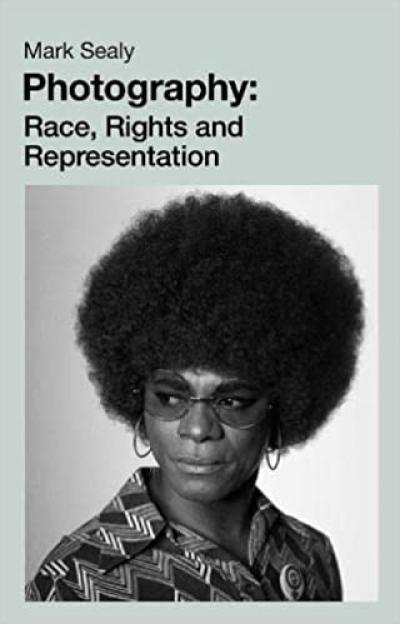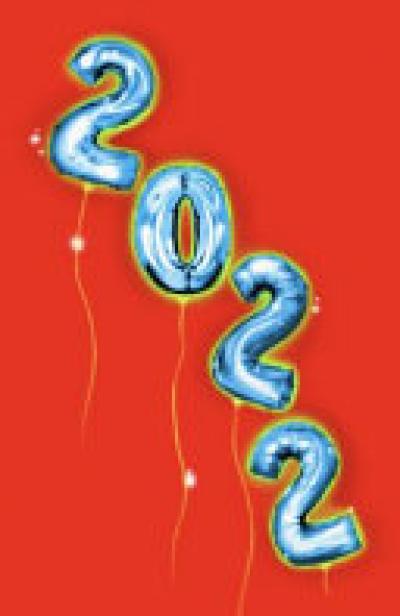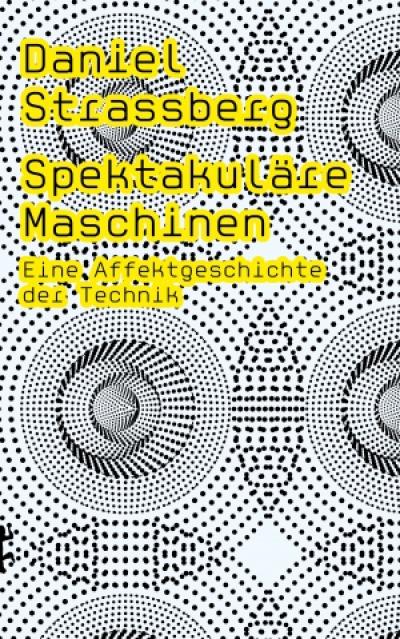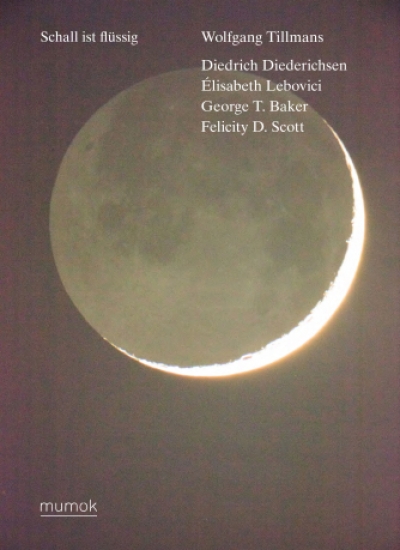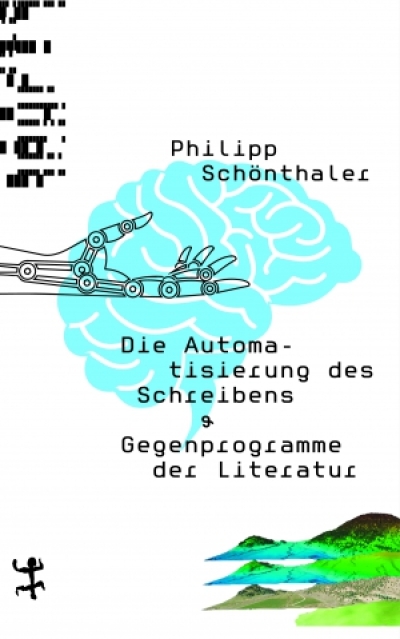Denise Ferreira da Silva
Unpayable Debt
Carol Vernallis, Holly Rogers, Jonathan…
Cybermedia. Explorations in Science, Sound, and Vision
Kathy Acker, McKenzie Wark
Du hast es mir sehr angetan. E-Mails 1995/96
Kirsty Bell
The Undercurrents. A Story of Berlin
Arnold Bartetzky Nicolas, Karpf, Greta…
Architektur und Städtebau in der DDR. Stimmen und…
Barbara Winckler, Enass Khansa,…
Thinking Through Ruins. Genealogies, Functions, and…
Stanislas Chaillou
Artificial Intelligence and Architecture. From Research to…
Reclaim Your City
Bitte Lebn. Urbane Kunst & Subkultur in Berlin 2003 -…
Claudia Mareis, Moritz Greiner-Petter,…
Critical by Design? Genealogies, Practices, Positions
Arch+ Zeitschrift für Architektur und…
Arch+ 247. Cohabitation
Mark Sealy
Photography. Race, Rights and Representation
Anna-Sophie Springer & Etienne…
These Birds Of Temptation (Intercalations 6)
Ioanna Gerakidi & Danae Io
In the Current of the Situation
Ricardo Devesa
Outdoor Domesticity. On the Relationships between Trees,…
Nils Wortmann
Alles so schön still hier 100 Ambient-Alben, die man gehört…
Herbert Haffner
His Master's Voice. Die Geschichte der Schallplatte.…
Markus Müller (Hg)
Free Music Production. FMP - The Living Music
Alexander Opper, Katharina Fink, Nadine…
Das Bauhaus verfehlen/ Missing the Bauhaus
Katharina Fink, Marie-Anne Kohl, Nadine…
Ghosts, spectres, revenants. Hauntology as a means to think…
Christine Schranz (ed.)
Shifts in Mapping. Maps as a tool of knowledge
Finn Dammann, Boris Michel (Hg.)
Handbuch Kritisches Kartieren
Krypto-Kunst Kolja Reichert
Krypto-Kunst. NFTs und digitales Eigentum (Digitale…
Alexander Stumm, Victor Lortie (Hg)
Überbau. Produktionsverhältnisse der Architektur im…
Robin Becker, David Hagen, Livia von…
Ästhetik nach Adorno. Positionen zur Gegenwartskunst
Giovanna Borasi (Hg.)
A Section of Now. Social Norms and Rituals as Sites for…
Boris Groys
Philosophy of Care
Terry Smith
Curating the Complex and the Open Strike
Pedro Neves Marques (ed.)
YWY, Searching for a Character between Future Worlds Gender…
Bassam El Baroni (ed.)
Between the Material and the Possible. Infrastructural Re-…
AA Cavia
Logiciel. Six Seminars on Computational Reason
IDEA Magazine
IDEA 397. Encountering Books. Art Book Fairs of the World,…
Oxana Timofeeva
Solar Politics (Theory Redux)
Dhanveer Singh Brar
Teklife, Ghettoville, Eski. The Sonic Ecologies of Black…
Jeanne van Heeswijk, Maria Hlavajova,…
Toward the Not-Yet. Art as Public Practice
Karin Harrasser
Surazo
Chase Galis, Christina Moushoul, Sonia…
Party Planner, Vol. 1, Party Favor
Oli Freke
Synthesizer Evolution: From Analogue to Digital and Back
Felix Pfeiffer-Kloss (Hg)
Berlin U-Bahn Architecture & Design Map. Berliner U-…
Alvin Lucier
Eight Lectures on Experimental Music
Derek Lamberton (Hg.)
Brutalismus Stadtplan Berlin. Brutalist Berlin Map
Daniel Strassberg
Spektakuläre Maschinen. Eine Affektgeschichte der Technik
Laurie Penny
Sexuelle Revolution. Rechter Backlash und feministische…
bell hooks
Männer, Männlichkeit und Liebe
Angela Million, Christian Haid, Ignacio…
Spatial Transformations. Kaleidoscopic Perspectives on the…
Saidiya Hartman
Diese bittere Erde (ist womöglich nicht, was sie scheint)
Simone Forti
Simone Forti. Handbook in Motion. An Account of an Ongoing…
Paul Dobraszcyk
Architecture and Anarchism. Building without Authority
Elke Genzel, Pamela Voigt
BUCH ZWEI. Leben in Kunststoffbauten
Marie-Luise Angerer
Nichtbewusst. Affektive Kurzschlüsse zwischen Psyche und…
Martin Eberle
Hi Schatz!
Ernesto Laclau
Die populistische Vernunft
Desiree Förster
Aesthetic Experience of Metabolic Processes
Brandon LaBelle
Dreamtime X
Israel Martínez
Dead People Whispering to Us
Rodrigo Karmy Bolton
The Future Is Inherited: Fragments of a Chile in Revolt
Ina Wudtke
Worker Writers / Arbeiterschriftsteller:innen
Ekaterina Degot, David Riff, Jan Sowa (…
Perverse decolonisation? (Deutsche Ausg.)
The Otolith Group, Megs Morley (Hg)
Xenogenesis. The Otolith Group (Anjalika Sagar, Kodwo Eshun)
Karin Krauthausen, Rebekka Ladewig (Hg.)
Modell Hütte. Von emergenten Strukturen, schützender Haut…
Edited by Michèle Leloup, Cyrille…
The Wood That Makes Our City
Lars Henrik Gass (Hg.)
Hellmuth Costard. Das Wirkliche war zum Modell geworden
Peter Swinnen, Nikolaus Hirsch
A.J. Lode Janssens 1,47 mbar
Juliane Rebentisch
Der Streit um Pluralität. Auseinandersetzungen mit Hannah…
Helke Sander
I like chaos, but I don’t know, whether chaos likes me
Viction Workshop (Hg.)
More Is More: Designing Bigger, Bolder, Brighter
Cristina Baldacci, Clio Nicastro,…
Over and Over and Over Again Reenactment Strategies in…
Pauline Agustoni, Satomi Minoshima
Craft Portrait: Dorozome
Nick Axel, Nicholas Korody (eds)
Babyn Yar. Past, Present, Future
Brian Massumi
Couplets. Travels in Speculative Pragmatism
Justin Joquue
Revolutionary Mathematics. Artificial Intelligence,…
Melissa Anderson
Inland Empire
Arch+ Zeitschrift für Architektur und…
Arch+ 246. Zeitgenössische feministische Raumpraxis
Alexander Galloway
Uncomputable. Play and Politics in the Long Digital Age
Friedrich Balke, Bernhard Siegert,…
Kleine Formen – Archiv für Mediengeschichte, Bd. 19
Ekaterina Degot, David Riff, Jan Sowa (…
Perverse decolonisation? (English Ed.)
Hanka van der Voet, Johannes Reponen (…
Warehouse Review 002, A Review of Reviews
Elizabeth Wilson
Eingeweide, Pillen, Feminismus
Christiane Paul (Hg)
A Companion to Digital Art (Blackwell Companions to Art…
Mariana Pestana, Sumitra Upham, Billie…
Empathy Revisited. Designs for more than one
McKenzie Wark
Philosophy for Spiders. On the Low Theory of Kathy Acker
Olivia Horsfall Turner, Simona…
An Alphabet of Architectural Models
David Graeber, David Wengrow
Anfänge. Eine neue Geschichte der Menschheit
Natasha Ginwala, Gal Kirn, Niloufar…
Nights of the Dispossessed: Riots Unbound
Patrick Syme, Abraham Gottlob Werner
Werners Nomenklatur der Farben. Angepasst an Zoologie,…
Carla Lonzi
Self-portrait
Wolfgang Tillmans
Schall ist flüssig (mumok)
Kolja Möller (Hg)
Populismus. Ein Reader
Alexander Kluge
Das Buch der Kommentare. Unruhiger Garten der Seele
Alexander Kluge
Zirkus / Kommentar
Natalie Donat-Cattin
Collective Processes. Counterpractices in European…
Philipp Schönthaler
Die Automatisierung des Schreibens & Gegenprogramme der…
Marie Rotkopf, Marcus Steinweg
Fetzen. Für eine Philosophie der Entschleierung
Alan Licht
Common Tones. Selected Interviews with Artists and…
Barbara Penner, Adrian Forty, Olivia…
Extinct. A Compendium of Obsolete Objects
Stephan Geene
Freiheit 71. Ricky Shayne, Musik und die Materialität des…
Stephan Gregory
Die kühle Kamera. Witz und Melancholie der seriellen…
Philipp Ekardt
Benjamin on Fashion
Laurie Cluitmans (Ed.)
On The Necessity Of Gardening. An Abc Of Art, Botany And…











